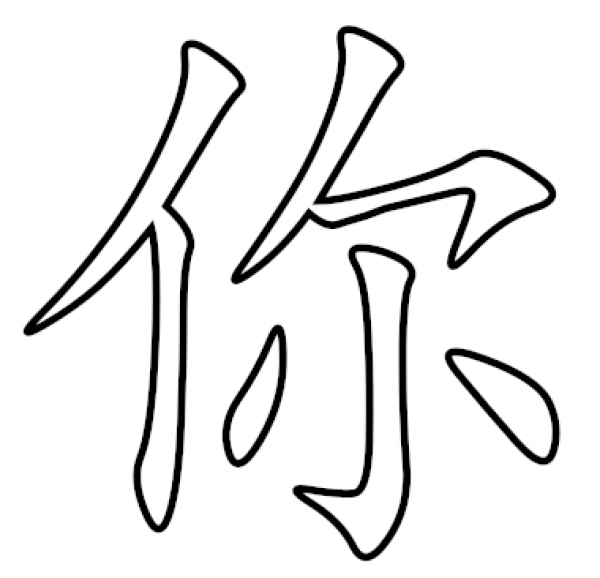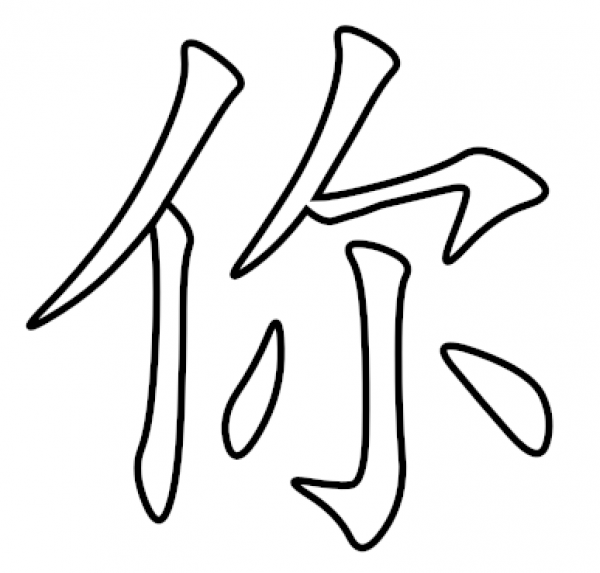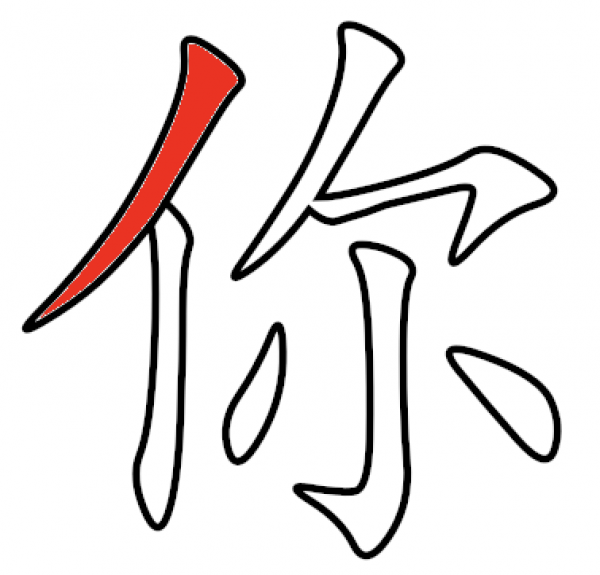Wonderful help!
Within a few minutes I had the first few steps working.
1) Turned out that Microsoft Word stores fonts in its own application library. So I found the font I wanted and put it in the global library, now GIMP has access to it as well.
2) Super simple and I would never have guessed that approach.
3) I have done the following and run into a few problems.
I am posting 3 pictures to explain what I am doing and what my problem is.

I have the character with the black edge - looks wonderful!

I used the paths tool to make a block in the 亻's top part from the upright part. I figured that the paths tool would give me the best fitting line and that seemed to be the case.

Here is the problem. I used bucket fill tool and I now have 3 colours. Red inside with a white brim and black edge.
How do I get rid of the white brim?
How do I paint the black edge red? I only want the top part painted red in the first step.
Thank you for points 1-3. As you can see from my post below I am still working on point 3, but 1-3 have been very helpful.
Regarding 4 I have inserted a picture. The arrows/lines seem drawn by hand, but it still gives an idea of the problem. The lines are not straight lines. And you have to start from a certain point. But stroke 4 has a twist. You go right and then turn down in one stroke. If the number started the line and the arrowhead finished the line then I think it would probably be the most ideal. But as you can see from this character some strokes start in very crammed places (compare 1 and 4) so the size of the numbers would have to be adjustable.
![[Image: 4f60-number.png]](https://www.twpen.com/bishun-number/4f60-number.png)
Within a few minutes I had the first few steps working.
1) Turned out that Microsoft Word stores fonts in its own application library. So I found the font I wanted and put it in the global library, now GIMP has access to it as well.
2) Super simple and I would never have guessed that approach.
3) I have done the following and run into a few problems.
I am posting 3 pictures to explain what I am doing and what my problem is.
I have the character with the black edge - looks wonderful!
I used the paths tool to make a block in the 亻's top part from the upright part. I figured that the paths tool would give me the best fitting line and that seemed to be the case.
Here is the problem. I used bucket fill tool and I now have 3 colours. Red inside with a white brim and black edge.
How do I get rid of the white brim?
How do I paint the black edge red? I only want the top part painted red in the first step.
(08-05-2023, 11:40 AM)Ofnuts Wrote:(08-05-2023, 09:56 AM)renemolbo Wrote: In my first post you helped me figuring out how to do the character writing square. Now it is time to add characters and I am facing several roadblocks.
I am using GIMP on an Mac M2 Air, so that might be a reason for the first problem.
1) I have fonts available in Microsoft Word that are not available in GIMP. The fonts I want to use are listed after Wingdings in Word (which is not where they should be alphabetically listed). I am planning on using either BiauKaiTC or Kaiti TC.
How do I get these fonts to be available in GIMP?
2) I want the character to be drawn with a black edge only. How do I do that?
3) I want to fill the strokes of the characters that are being drawn at that step. It is a problem to just use the filler when the a part is directly connected to the first part, but not to be drawn before the next step. How do I put a "block" on where the filler can fill up to?
4) How can I make thin lines with arrows to show where to start, turn and end the stroke?
I am attaching a picture that gives an idea of problem 2) and 3). I want a different approach, because I want the arrows as well. I hope the picture explains some of the complications.
- Can you locale the font files? Gimp takes TTF and OTF
- Create the character in a text layer, Layer > Text to path, then on a new layer Edit > Stroke path in Line` mode (and hide the initial text layer)
- Many solutions, but a rather immediate one is to copy the filled area from the initial text layer. Changing the color is easy using alpha-lock and painting.
- There are several scripts to draw arrows, but perhaps you could show an example of the arrows you want.
Thank you for points 1-3. As you can see from my post below I am still working on point 3, but 1-3 have been very helpful.
Regarding 4 I have inserted a picture. The arrows/lines seem drawn by hand, but it still gives an idea of the problem. The lines are not straight lines. And you have to start from a certain point. But stroke 4 has a twist. You go right and then turn down in one stroke. If the number started the line and the arrowhead finished the line then I think it would probably be the most ideal. But as you can see from this character some strokes start in very crammed places (compare 1 and 4) so the size of the numbers would have to be adjustable.
![[Image: 4f60-number.png]](https://www.twpen.com/bishun-number/4f60-number.png)



